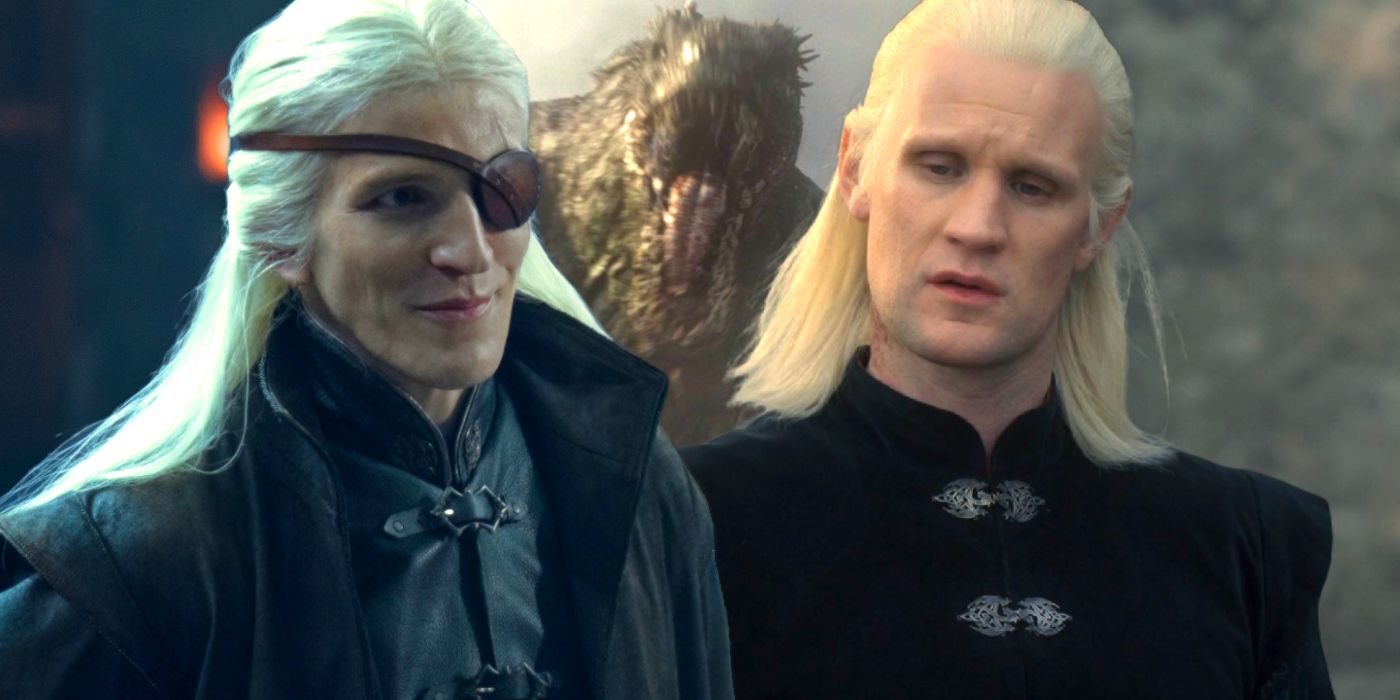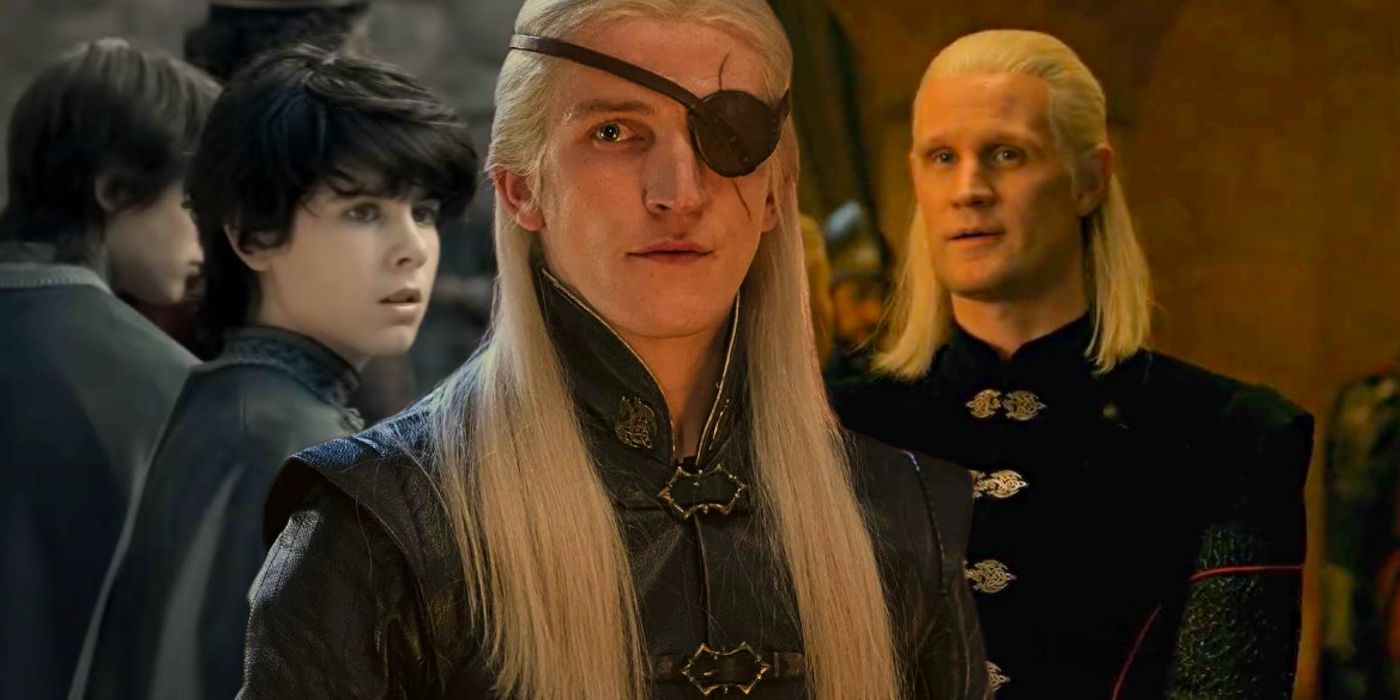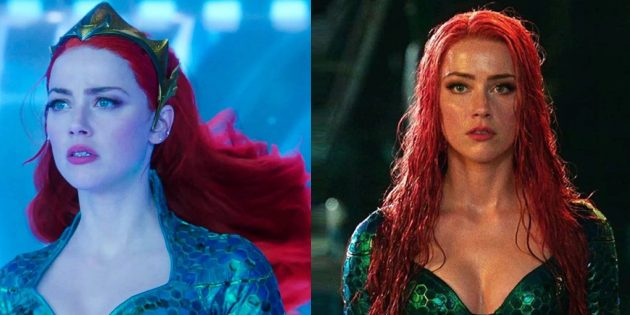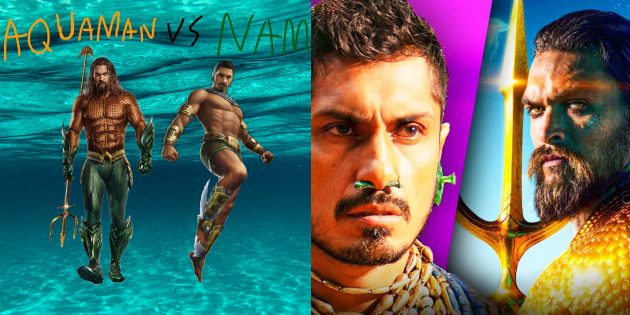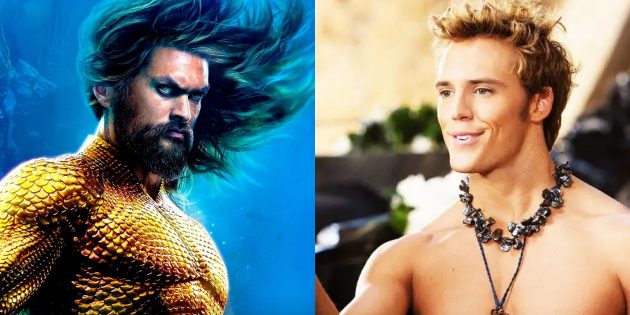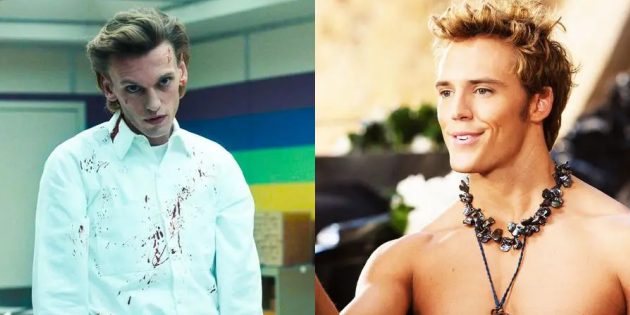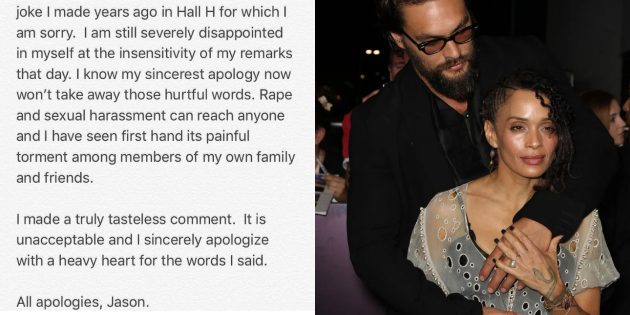The dynamic between Daemon and Aemond Targaryen in House of the Dragon has major implications for Daemon’s character arc, adding depth to him.
The perfect foil for Daemon Targaryen arrived on House of the Dragon in the form of his nephew, Aemond, forever changing the character’s fate. Fully grown and equipped with a menacing eye patch, the comparisons between the two Targaryen men become evidently clear. When Aemond bonds with the extraordinarily powerful dragon, Vhagar, Daemon relates to him. When Daemon slices Vaemond’s head off, Aemond is the only man in the room that looks impressed. The qualities Daemon and Aemond bring to their respective sides are uncanny in similarity, each being wildly dangerous and willing to do terrible things to win.
As two second sons, both the younger brother to a King, Daemon and Aemond share many similarities. In the world of House of the Dragon, second sons must often go to greater lengths to make a name for themselves, as the world has already deemed them inferior to their older brother. In the case for both Daemon and Aemond, this inferiority has made them a little nuts, and both have issues with authority. Daemon is older by a few decades though, offering him a sense of maturity and experience that seems to give him one up over Aemond, who he sees as a younger version of himself, a person he has already conquered.
Aemond & Daemon’s Fight Is Even Better With More Set Up
The fatal fight between Daemon and Aemond in Fire and Blood is one of the most thrilling and imaginative spectacles in the novel. While the Dance of the Dragons takes up a few hundred pages, many details are left out that House of the Dragon can fill viewers in on. The nature of Daemon and Aemond’s relationship is unique to the detail provided in the show. If Daemon sees Aemond as a younger version of himself, the epic spectacle of their dragon back duel carries an extra weight to it. Daemon is not only fighting Aemond, he is vanquishing the past that has haunted him for decades.
Daemon Targaryen has done irredeemable things and is a conflicted character throughout the series. He isn’t a hero, or even an anti-hero, but, depending on the perspective, his killing of Aemond can be seen as a heroic act in the war, as he allegedly sacrifices himself to take out the Greens’ most powerful dragon. But Daemon’s death is left vague. While his blade, Dark Sister, is found years later, his body is never recovered. While it’s highly unlikely he survives the circumstances of the battle, the vague nature of his disappearance represents the same idea either way. The added context of House of the Dragon shows that Daemon has killed his past, left the Targaryen blade behind him, and can move on.
Daemon’s Reaction To Aemond Makes Their Ending Sadder
While it’s entertaining to think of two fierce Targaryen warriors facing off, it’s sad to remember that the two are family. Under different circumstances, Daemon might have wanted to be a guiding adult to the son of his beloved brother. Daemon’s personality is reflected by his dragon, Caraxes, depicting him as something of a loner, or someone who doesn’t belong. But maybe after seeing the similarities in Aemond, he could’ve wanted a connection. Aemond practically built himself to be a soldier in the Dance of the Dragons, denying himself any remaining chance of a loving childhood.
Episode 8 of House of the Dragon sees the family gather around Viserys for one last dinner, a glimpse of what the family could have been. While the focus was primarily on Alicent Hightower and Rhaenyra Targaryen, there are certainly other family members in the room who could’ve benefited from a peaceful union. Unfortunately, Daemon and Aemond are doomed to be enemies, with their illuminated dynamic adding importance to their inevitable fates.



